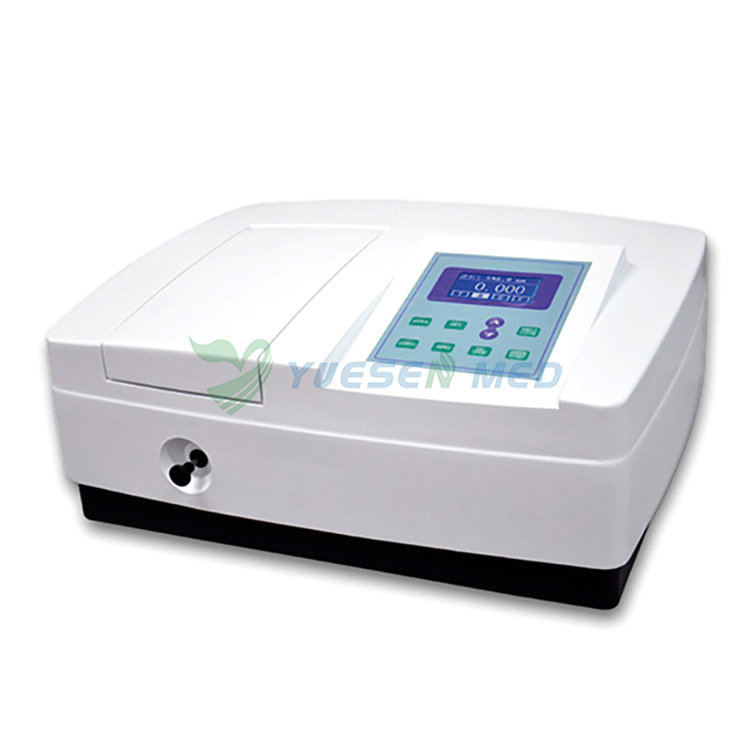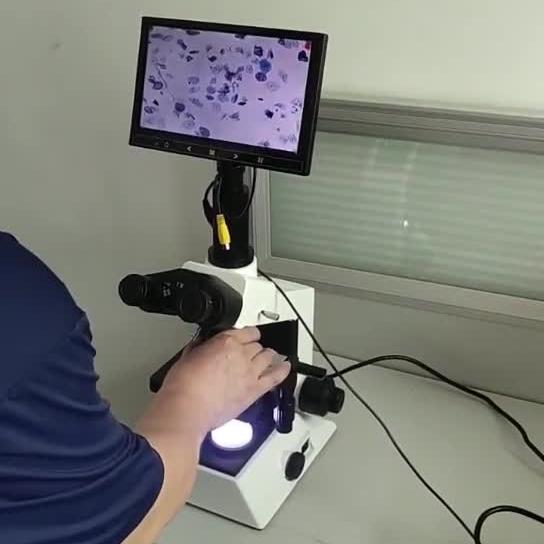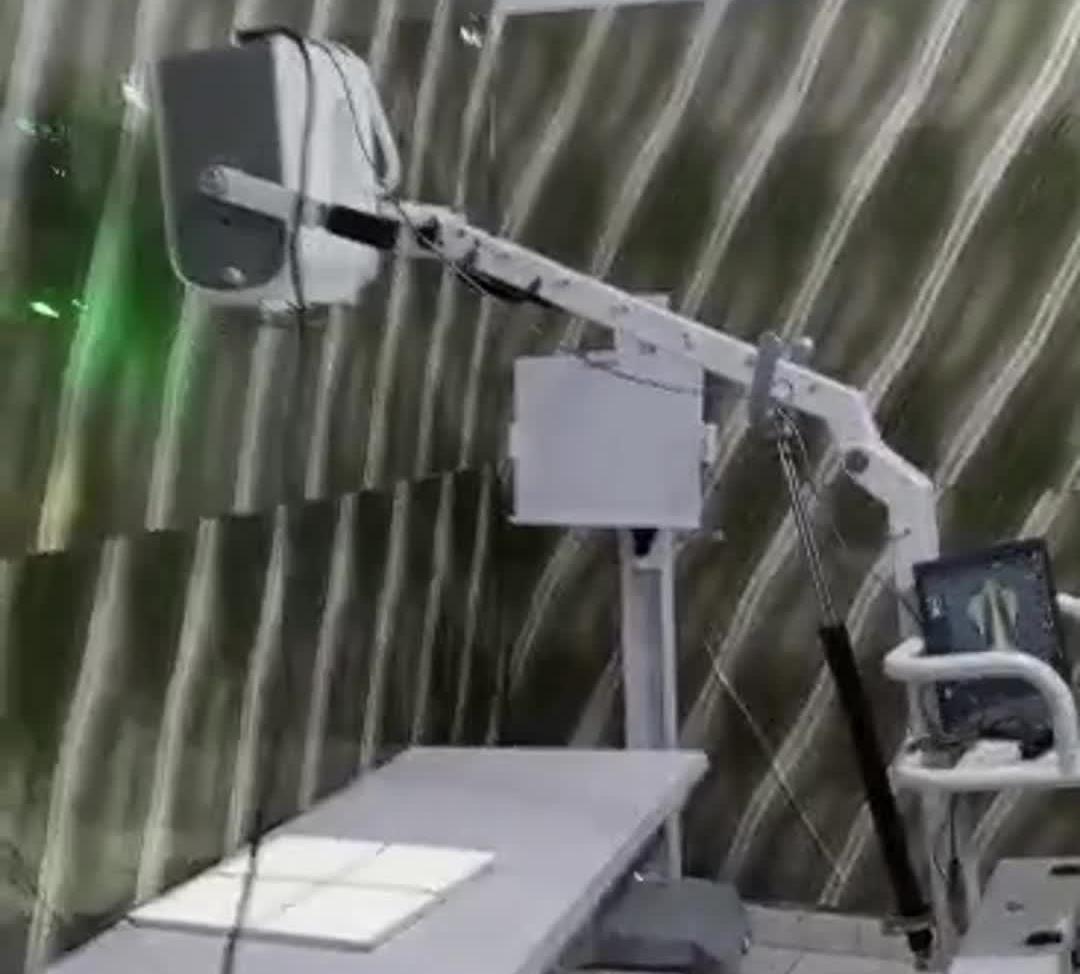Hot Products
YSX500D 50kW DR system set up and put into service in Cambodia.
YSENMED YSX500D 50kW digital x-ray system has been successfully set up and put into service in a hospital in Cambodia.
YSX056-PE serving as a vehicle-mounted x-ray in the Philippines
YSX056-PE 5.6kW portable x-ray unit has been adapted to fit on a truck, to provide mobile x-ray examination service for remote communities in the Philippines.
X Ray Machine To Zimbabwe
x ray machine, 50KW x ray machine
Microscope To Malawi
Achromatic objectives: 4X、10X、40X(S), 100X(S、Oil) Wide field eyepiece: WF10X(WF16X for option) Eyepiece head: Sliding binocular head inclined at 45° Stage: Double layer mechanical stage size 140X140mm, moving range 75X45mm Focusing: Coaxial coarse and
From Analysis to Precision: The Many Uses of UV/VIS Spectrophotometers in Science
Views : 1052
Update time : 2024-11-09 15:22:00
When you think about the tools that scientists use, what comes to mind? Microscopes? Test tubes? While those are all essential, there's one unsung hero in the lab that deserves a spotlight: the UV/VIS spectrophotometer. This nifty instrument plays a crucial role in various scientific fields, from chemistry to biology. So, let's dive into the fascinating world of UV/VIS spectrophotometry and explore its many applications!

What is a UV/VIS Spectrophotometer?
Before we get into its uses, let's break down what a UV/VIS spectrophotometer actually is. In simple terms, it's an analytical instrument that measures the intensity of light at different wavelengths in the ultraviolet (UV) and visible (VIS) parts of the electromagnetic spectrum. By shining light through a sample and measuring how much of that light is absorbed, scientists can glean a wealth of information about the sample's composition.
How Does It Work?
Imagine you're at a concert, and you're trying to hear your favorite song over the crowd. You'd probably focus on the music while tuning out the noise around you. Similarly, a UV/VIS spectrophotometer isolates specific wavelengths of light to analyze a sample. It works by passing light through a sample and measuring the amount of light that gets absorbed. This absorption is then plotted on a graph, creating a spectrum that reveals the sample's characteristics.
The Importance of Wavelengths
Now, why are wavelengths so important? Different substances absorb light at different wavelengths. Think of it like a fingerprint; each compound has its unique absorption pattern. By analyzing these patterns, scientists can identify and quantify substances within a sample. This is particularly useful in fields like chemistry and biochemistry, where knowing the concentration of a substance is crucial.
The UV and VIS Spectrum
The UV/VIS spectrophotometer operates mainly in the UV (200-400 nm) and visible (400-700 nm) ranges. The UV range is excellent for analyzing smaller molecules, while the visible range is often used for colored compounds. This dual capability makes the instrument versatile and widely applicable.
Applications in Chemistry
Quantitative Analysis
One of the primary uses of UV/VIS spectrophotometers in chemistry is quantitative analysis. By measuring the absorbance of a solution, chemists can determine the concentration of a particular substance using Beer-Lambert Law. This law states that absorbance is directly proportional to concentration, which allows for precise calculations.
Reaction Kinetics
Ever wondered how fast a chemical reaction occurs? UV/VIS spectrophotometry can help with that! By monitoring changes in absorbance over time, scientists can study the rates of reactions and determine factors that influence those rates. It's like having a stopwatch for chemical processes!
Purity Testing
In the world of pharmaceuticals, purity is paramount. UV/VIS spectrophotometers can be used to assess the purity of compounds by comparing the spectrum of a sample with that of a pure standard. If there are discrepancies, it may indicate impurities or degradation.
Applications in Biology
DNA and RNA Quantification
In molecular biology, UV/VIS spectrophotometers are essential for quantifying nucleic acids. By measuring absorbance at specific wavelengths (260 nm for nucleic acids), researchers can determine the concentration and purity of DNA or RNA samples. It's like a quality control check for genetic material!
Protein Analysis
Just as with nucleic acids, proteins can also be quantified using UV/VIS spectrophotometry. Proteins absorb light at 280 nm due to the presence of aromatic amino acids. This allows scientists to measure protein concentration quickly and efficiently.
Enzyme Activity Studies
Enzymes are biological catalysts, and their activity can be monitored using UV/VIS spectrophotometers. By measuring the change in absorbance as a substrate is converted into a product, researchers can evaluate enzyme kinetics and efficiency.
Environmental Applications
Water Quality Testing
Water quality is crucial for both ecological and human health. UV/VIS spectrophotometers can analyze water samples for contaminants, such as heavy metals or organic pollutants. This real-time analysis helps ensure safe drinking water and monitor environmental health.
Soil Analysis
Just like water, soil quality affects plant growth and ecosystem health. Scientists use UV/VIS spectrophotometry to assess soil samples for nutrient content and contaminants. It's a vital tool for agriculture and environmental science.
Industrial Applications
Quality Control in Manufacturing
In manufacturing, consistency is key. UV/VIS spectrophotometers are used to monitor the quality of raw materials and finished products. Whether it's ensuring the right color in dyes or the correct concentration in pharmaceuticals, this instrument helps maintain high standards.
Food and Beverage Testing
Ever wondered how food manufacturers ensure the quality of their products? UV/VIS spectrophotometers are used to analyze color and concentration in food and beverages. From checking the quality of wine to measuring the concentration of additives, this technology plays a vital role in the food industry.
Research and Development
Developing New Materials
In materials science, researchers use UV/VIS spectrophotometry to study the properties of new materials. By analyzing how these materials absorb light, scientists can tailor their properties for specific applications, from solar panels to sensors.
Drug Development
The pharmaceutical industry relies heavily on UV/VIS spectrophotometers during drug development. From analyzing the stability of compounds to determining their absorption characteristics, this instrument is integral to creating effective medications.
Educational Uses
Teaching Tool
In educational settings, UV/VIS spectrophotometers serve as excellent teaching tools. They help students understand fundamental concepts in chemistry and biology, making abstract ideas more tangible. Hands-on experience with this instrument can ignite a passion for science in young minds.
The Future of UV/VIS Spectrophotometry
Advances in Technology
With advancements in technology, UV/VIS spectrophotometers are becoming more sophisticated. New features, such as enhanced sensitivity and automation, are making these instruments even more powerful and user-friendly. As technology evolves, so will the applications of this versatile tool.
Integration with Other Techniques
The future also holds exciting possibilities for integrating UV/VIS spectrophotometry with other analytical techniques, such as mass spectrometry or chromatography. This combination can provide even more comprehensive insights into complex samples.
Conclusion
From analyzing the purity of pharmaceuticals to monitoring environmental health, UV/VIS spectrophotometers are indispensable tools in the scientific community. Their ability to provide quick, accurate, and reliable results makes them a favorite among researchers and industry professionals alike. As technology continues to advance, the applications of this versatile instrument will only expand. So, the next time you hear about UV/VIS spectrophotometry, remember—it's not just a piece of equipment; it's a gateway to discovery and precision in science!

What is a UV/VIS Spectrophotometer?
Before we get into its uses, let's break down what a UV/VIS spectrophotometer actually is. In simple terms, it's an analytical instrument that measures the intensity of light at different wavelengths in the ultraviolet (UV) and visible (VIS) parts of the electromagnetic spectrum. By shining light through a sample and measuring how much of that light is absorbed, scientists can glean a wealth of information about the sample's composition.
How Does It Work?
Imagine you're at a concert, and you're trying to hear your favorite song over the crowd. You'd probably focus on the music while tuning out the noise around you. Similarly, a UV/VIS spectrophotometer isolates specific wavelengths of light to analyze a sample. It works by passing light through a sample and measuring the amount of light that gets absorbed. This absorption is then plotted on a graph, creating a spectrum that reveals the sample's characteristics.
The Importance of Wavelengths
Now, why are wavelengths so important? Different substances absorb light at different wavelengths. Think of it like a fingerprint; each compound has its unique absorption pattern. By analyzing these patterns, scientists can identify and quantify substances within a sample. This is particularly useful in fields like chemistry and biochemistry, where knowing the concentration of a substance is crucial.
The UV and VIS Spectrum
The UV/VIS spectrophotometer operates mainly in the UV (200-400 nm) and visible (400-700 nm) ranges. The UV range is excellent for analyzing smaller molecules, while the visible range is often used for colored compounds. This dual capability makes the instrument versatile and widely applicable.
Applications in Chemistry
Quantitative Analysis
One of the primary uses of UV/VIS spectrophotometers in chemistry is quantitative analysis. By measuring the absorbance of a solution, chemists can determine the concentration of a particular substance using Beer-Lambert Law. This law states that absorbance is directly proportional to concentration, which allows for precise calculations.
Reaction Kinetics
Ever wondered how fast a chemical reaction occurs? UV/VIS spectrophotometry can help with that! By monitoring changes in absorbance over time, scientists can study the rates of reactions and determine factors that influence those rates. It's like having a stopwatch for chemical processes!
Purity Testing
In the world of pharmaceuticals, purity is paramount. UV/VIS spectrophotometers can be used to assess the purity of compounds by comparing the spectrum of a sample with that of a pure standard. If there are discrepancies, it may indicate impurities or degradation.
Applications in Biology
DNA and RNA Quantification
In molecular biology, UV/VIS spectrophotometers are essential for quantifying nucleic acids. By measuring absorbance at specific wavelengths (260 nm for nucleic acids), researchers can determine the concentration and purity of DNA or RNA samples. It's like a quality control check for genetic material!
Protein Analysis
Just as with nucleic acids, proteins can also be quantified using UV/VIS spectrophotometry. Proteins absorb light at 280 nm due to the presence of aromatic amino acids. This allows scientists to measure protein concentration quickly and efficiently.
Enzyme Activity Studies
Enzymes are biological catalysts, and their activity can be monitored using UV/VIS spectrophotometers. By measuring the change in absorbance as a substrate is converted into a product, researchers can evaluate enzyme kinetics and efficiency.
Environmental Applications
Water Quality Testing
Water quality is crucial for both ecological and human health. UV/VIS spectrophotometers can analyze water samples for contaminants, such as heavy metals or organic pollutants. This real-time analysis helps ensure safe drinking water and monitor environmental health.
Soil Analysis
Just like water, soil quality affects plant growth and ecosystem health. Scientists use UV/VIS spectrophotometry to assess soil samples for nutrient content and contaminants. It's a vital tool for agriculture and environmental science.
Industrial Applications
Quality Control in Manufacturing
In manufacturing, consistency is key. UV/VIS spectrophotometers are used to monitor the quality of raw materials and finished products. Whether it's ensuring the right color in dyes or the correct concentration in pharmaceuticals, this instrument helps maintain high standards.
Food and Beverage Testing
Ever wondered how food manufacturers ensure the quality of their products? UV/VIS spectrophotometers are used to analyze color and concentration in food and beverages. From checking the quality of wine to measuring the concentration of additives, this technology plays a vital role in the food industry.
Research and Development
Developing New Materials
In materials science, researchers use UV/VIS spectrophotometry to study the properties of new materials. By analyzing how these materials absorb light, scientists can tailor their properties for specific applications, from solar panels to sensors.
Drug Development
The pharmaceutical industry relies heavily on UV/VIS spectrophotometers during drug development. From analyzing the stability of compounds to determining their absorption characteristics, this instrument is integral to creating effective medications.
Educational Uses
Teaching Tool
In educational settings, UV/VIS spectrophotometers serve as excellent teaching tools. They help students understand fundamental concepts in chemistry and biology, making abstract ideas more tangible. Hands-on experience with this instrument can ignite a passion for science in young minds.
The Future of UV/VIS Spectrophotometry
Advances in Technology
With advancements in technology, UV/VIS spectrophotometers are becoming more sophisticated. New features, such as enhanced sensitivity and automation, are making these instruments even more powerful and user-friendly. As technology evolves, so will the applications of this versatile tool.
Integration with Other Techniques
The future also holds exciting possibilities for integrating UV/VIS spectrophotometry with other analytical techniques, such as mass spectrometry or chromatography. This combination can provide even more comprehensive insights into complex samples.
Conclusion
From analyzing the purity of pharmaceuticals to monitoring environmental health, UV/VIS spectrophotometers are indispensable tools in the scientific community. Their ability to provide quick, accurate, and reliable results makes them a favorite among researchers and industry professionals alike. As technology continues to advance, the applications of this versatile instrument will only expand. So, the next time you hear about UV/VIS spectrophotometry, remember—it's not just a piece of equipment; it's a gateway to discovery and precision in science!
Related News
Read More >>
 Introduction video of YSENMED YSXWJ-BX301B Digital Biological Microscope.
Introduction video of YSENMED YSXWJ-BX301B Digital Biological Microscope.
Apr .01.2025
Here we share the introduction video of YSENMED YSXWJ-BX301B Digital Biological Microscope.
 YSDR-VET320 veterinary DR & YSB-DU10V color ultrasound serving well in Kiram Veterinary Surgery in Uganda
YSDR-VET320 veterinary DR & YSB-DU10V color ultrasound serving well in Kiram Veterinary Surgery in Uganda
Mar .31.2025
Kiram Veterinary Surgery in Uganda shares the clear images they have got from YSDR-VET320 veterinary digital x-ray system and YSB-DU10V vet color ultrasound machine.
 YSENMED YSFPD-R1012C mammo flat panel detector introduced and set up in a hospital in Senegal
YSENMED YSFPD-R1012C mammo flat panel detector introduced and set up in a hospital in Senegal
Mar .30.2025
Senegalese hospital has upgraded its analog mammography x-ray system with YSFPD-R1012C mammo flat panel detector, and the images come out clear.
 YSX-mDR5A 5.3kW mobile DR system working fine in a clinic in Gambia
YSX-mDR5A 5.3kW mobile DR system working fine in a clinic in Gambia
Mar .29.2025
YSENMED YSX-mDR5A 5.3kW mobile digital x-ray unit is working well in a clinic in Gambia.



